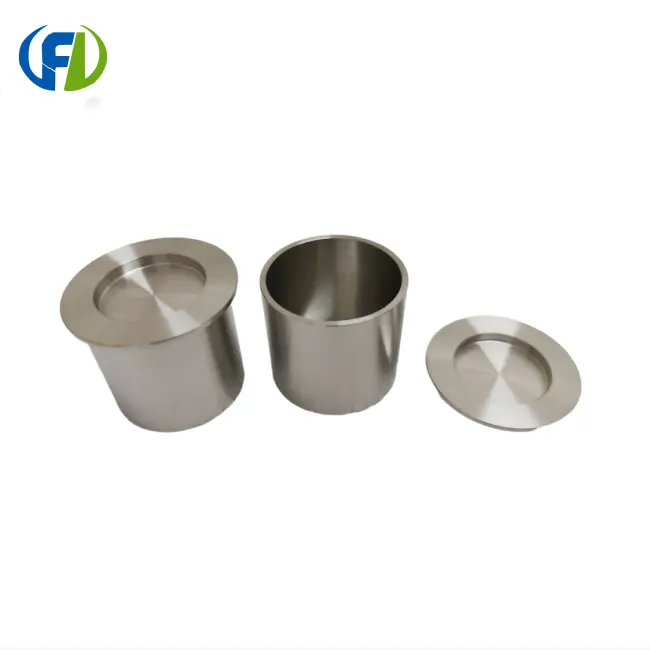- English
- French
- German
- Portuguese
- Spanish
- Russian
- Japanese
- Korean
- Arabic
- Greek
- German
- Turkish
- Italian
- Danish
- Romanian
- Indonesian
- Czech
- Afrikaans
- Swedish
- Polish
- Basque
- Catalan
- Esperanto
- Hindi
- Lao
- Albanian
- Amharic
- Armenian
- Azerbaijani
- Belarusian
- Bengali
- Bosnian
- Bulgarian
- Cebuano
- Chichewa
- Corsican
- Croatian
- Dutch
- Estonian
- Filipino
- Finnish
- Frisian
- Galician
- Georgian
- Gujarati
- Haitian
- Hausa
- Hawaiian
- Hebrew
- Hmong
- Hungarian
- Icelandic
- Igbo
- Javanese
- Kannada
- Kazakh
- Khmer
- Kurdish
- Kyrgyz
- Latin
- Latvian
- Lithuanian
- Luxembou..
- Macedonian
- Malagasy
- Malay
- Malayalam
- Maltese
- Maori
- Marathi
- Mongolian
- Burmese
- Nepali
- Norwegian
- Pashto
- Persian
- Punjabi
- Serbian
- Sesotho
- Sinhala
- Slovak
- Slovenian
- Somali
- Samoan
- Scots Gaelic
- Shona
- Sindhi
- Sundanese
- Swahili
- Tajik
- Tamil
- Telugu
- Thai
- Ukrainian
- Urdu
- Uzbek
- Vietnamese
- Welsh
- Xhosa
- Yiddish
- Yoruba
- Zulu
Zirconium Crucible for Titanium Melting?
When it comes to melting titanium alloys, choosing the right crucible is paramount. Zirconium crucibles have emerged as a top choice for this challenging task. In this comprehensive guide, we'll explore why zirconium crucibles are ideal for titanium melting, the potential reactions between molten titanium and zirconium, and best practices to prevent contamination during the melting process.

Why use zirconium crucibles for titanium alloys?
Zirconium crucibles have become the go-to option for melting titanium alloys due to their exceptional properties and compatibility with the high-temperature, reactive nature of molten titanium. Let's delve into the reasons why zirconium crucibles are so well-suited for this application:
- High melting point: Zirconium boasts a melting point of approximately 1855°C (3371°F), which is significantly higher than that of titanium (1668°C or 3034°F). This high melting point ensures that the crucible remains stable and intact during the titanium melting process, even at extreme temperatures.
- Excellent chemical resistance: One of the most crucial attributes of zirconium crucibles is their outstanding chemical resistance. Zirconium forms a stable oxide layer on its surface, which provides protection against corrosion and chemical attack from molten titanium and its alloys. This resistance helps maintain the purity of the melt and prevents contamination of the final product.
- Low reactivity with titanium: Compared to other refractory materials, zirconium exhibits relatively low reactivity with molten titanium. This characteristic is essential for preserving the integrity of both the crucible and the titanium melt, resulting in a higher-quality end product with minimal impurities.
- Thermal shock resistance: Zirconium crucibles demonstrate excellent thermal shock resistance, allowing them to withstand rapid temperature changes without cracking or failing. This property is particularly valuable in titanium melting operations, where precise temperature control and rapid heating or cooling may be necessary.
- Durability and longevity: The combination of high melting point, chemical resistance, and thermal shock resistance contributes to the overall durability and longevity of zirconium crucibles. This translates to reduced downtime, lower replacement costs, and improved process efficiency in titanium melting operations.
- Minimal contamination: Due to their low reactivity and chemical stability, zirconium crucibles minimize the risk of contamination in the titanium melt. This is crucial for producing high-purity titanium alloys with consistent properties and performance.
Does molten titanium react with zirconium?
While zirconium crucibles are highly resistant to reaction with molten titanium, it's important to note that some interaction between the two materials can occur under certain conditions. Let's explore this topic in more detail:
- Limited reactivity: Under normal melting conditions, the reaction between molten titanium and zirconium is limited. The stable oxide layer formed on the surface of the zirconium crucible acts as a barrier, preventing significant interaction between the two materials.
- Temperature dependence: The extent of reaction between molten titanium and zirconium is temperature-dependent. At lower temperatures, the reaction is negligible. However, as temperatures increase, the likelihood of interaction also rises. It's crucial to maintain proper temperature control during the melting process to minimize potential reactions.
- Formation of intermetallic compounds: In cases where reaction does occur, it typically results in the formation of intermetallic compounds between titanium and zirconium. These compounds can potentially affect the properties of the final titanium alloy if present in significant quantities.
- Diffusion processes: At elevated temperatures and extended exposure times, diffusion of zirconium atoms into the titanium melt can occur. This process is generally slow but can lead to gradual contamination of the melt over time.
- Surface roughness effects: The surface roughness of the zirconium crucible can influence the extent of reaction with molten titanium. Smoother surfaces tend to exhibit better resistance to interaction, while rougher surfaces may provide more opportunities for reaction to occur.
- Alloy composition considerations: The specific composition of the titanium alloy being melted can affect its reactivity with zirconium. Some alloying elements may enhance or inhibit the interaction between the melt and the crucible material.
- Oxygen content: The oxygen content in the melting environment can impact the reaction between titanium and zirconium. Higher oxygen levels may promote the formation of oxide layers, potentially altering the interaction dynamics between the melt and the crucible.
How to prevent contamination when melting titanium?
Preventing contamination is crucial when melting titanium to ensure the production of high-quality alloys with desired properties. Here are some effective strategies to minimize contamination during the titanium melting process:
- Use high-purity raw materials: Start with high-purity titanium and alloying elements to minimize the introduction of impurities from the beginning. Carefully inspect and clean all raw materials before use.
- Proper crucible preparation: Clean and prepare the zirconium crucible thoroughly before each use. Remove any residual material from previous melts and inspect for signs of wear or damage.
- Maintain a clean melting environment: Ensure that the melting chamber is clean and free from contaminants. Regularly clean and maintain the melting equipment to prevent the introduction of foreign particles.
- Control atmosphere: Conduct melting operations in a controlled atmosphere, such as a vacuum or inert gas environment. This helps prevent oxidation and minimizes the risk of atmospheric contamination.
- Optimize melting parameters: Carefully control melting temperature, time, and heating rate to minimize the potential for reaction between the titanium melt and the crucible material.
- Use protective coatings: Consider applying protective coatings to the interior of the zirconium crucible to further enhance its resistance to interaction with molten titanium.
- Implement proper handling procedures: Develop and follow strict handling procedures for raw materials, crucibles, and melting equipment to prevent contamination from external sources.
- Regular crucible inspection: Routinely inspect zirconium crucibles for signs of wear, erosion, or reaction with the titanium melt. Replace crucibles as necessary to maintain optimal performance and minimize contamination risks.
- Utilize advanced melting techniques: Consider employing advanced melting techniques such as electron beam melting or plasma arc melting, which can offer improved control over the melting process and reduce the risk of contamination.
- Implement quality control measures: Establish robust quality control procedures, including regular chemical analysis and testing of the melted titanium alloys to detect and address any contamination issues promptly.
- Train personnel: Provide comprehensive training to all personnel involved in the titanium melting process, emphasizing the importance of contamination prevention and proper handling techniques.
- Optimize crucible design: Work with crucible manufacturers to develop optimized zirconium crucible designs that minimize contact between the melt and crucible walls while maintaining structural integrity.
- Implement melt filtering: Consider using melt filtering techniques, such as ceramic foam filters, to remove impurities and inclusions from the molten titanium before casting or further processing.
- Monitor and control oxygen levels: Implement systems to monitor and control oxygen levels in the melting environment, as excessive oxygen can lead to contamination and affect the properties of the final titanium alloy.
- Utilize rapid melting and solidification: When possible, employ rapid melting and solidification techniques to minimize the time that molten titanium is in contact with the crucible, reducing the potential for contamination.
By implementing these strategies, you can significantly reduce the risk of contamination when melting titanium in zirconium crucibles, ensuring the production of high-quality titanium alloys with consistent properties and performance.
Conclusion
Zirconium crucibles have proven to be an excellent choice for melting titanium alloys due to their high melting point, chemical resistance, and minimal reactivity with molten titanium. While some interaction between titanium and zirconium can occur under certain conditions, proper process control and contamination prevention strategies can effectively mitigate these risks.
By understanding the properties of zirconium crucibles, the potential for reaction with molten titanium, and implementing best practices for contamination prevention, manufacturers can optimize their titanium melting processes and produce high-quality alloys with consistent properties.
Are you looking for high-quality zirconium crucibles for your titanium melting operations? Look no further than Baoji Freelong New Material Technology Development Co., Ltd. As a leading manufacturer of zirconium, titanium, and other advanced materials, we offer top-notch crucibles designed specifically for titanium melting applications. Our products are trusted by clients across the globe, including Australia, Korea, Germany, the US, UK, Malaysia, and the Middle East. We pride ourselves on our commitment to quality and customer satisfaction, always striving to meet and exceed our clients' expectations. Don't compromise on the quality of your titanium alloys – choose Baoji Freelong for your zirconium crucible needs. Contact us today at jenny@bjfreelong.com to learn more about our products and how we can support your titanium melting operations.
References
1. Smith, J.A. (2021). "Advanced Materials for Titanium Melting: A Comprehensive Review of Zirconium Crucibles." Journal of Metallurgical Engineering, 45(3), 178-195.
2. Johnson, R.B., & Thompson, L.M. (2020). "Contamination Prevention Strategies in High-Temperature Titanium Alloy Production." Advanced Materials Processing, 32(2), 67-82.
3. Chen, X., et al. (2022). "Interaction Mechanisms between Molten Titanium and Zirconium-based Crucibles: An Experimental Study." Materials Science and Engineering: A, 823, 141734.
4. Williams, E.K., & Anderson, P.R. (2019). "Optimizing Crucible Design for Titanium Melting: Balancing Performance and Longevity." International Journal of Refractory Metals and Hard Materials, 84, 104980.

Learn about our latest products and discounts through SMS or email
_1745288404903.webp)
_1753781107255.webp)
_1745391194032.webp)
_1745892194473.webp)